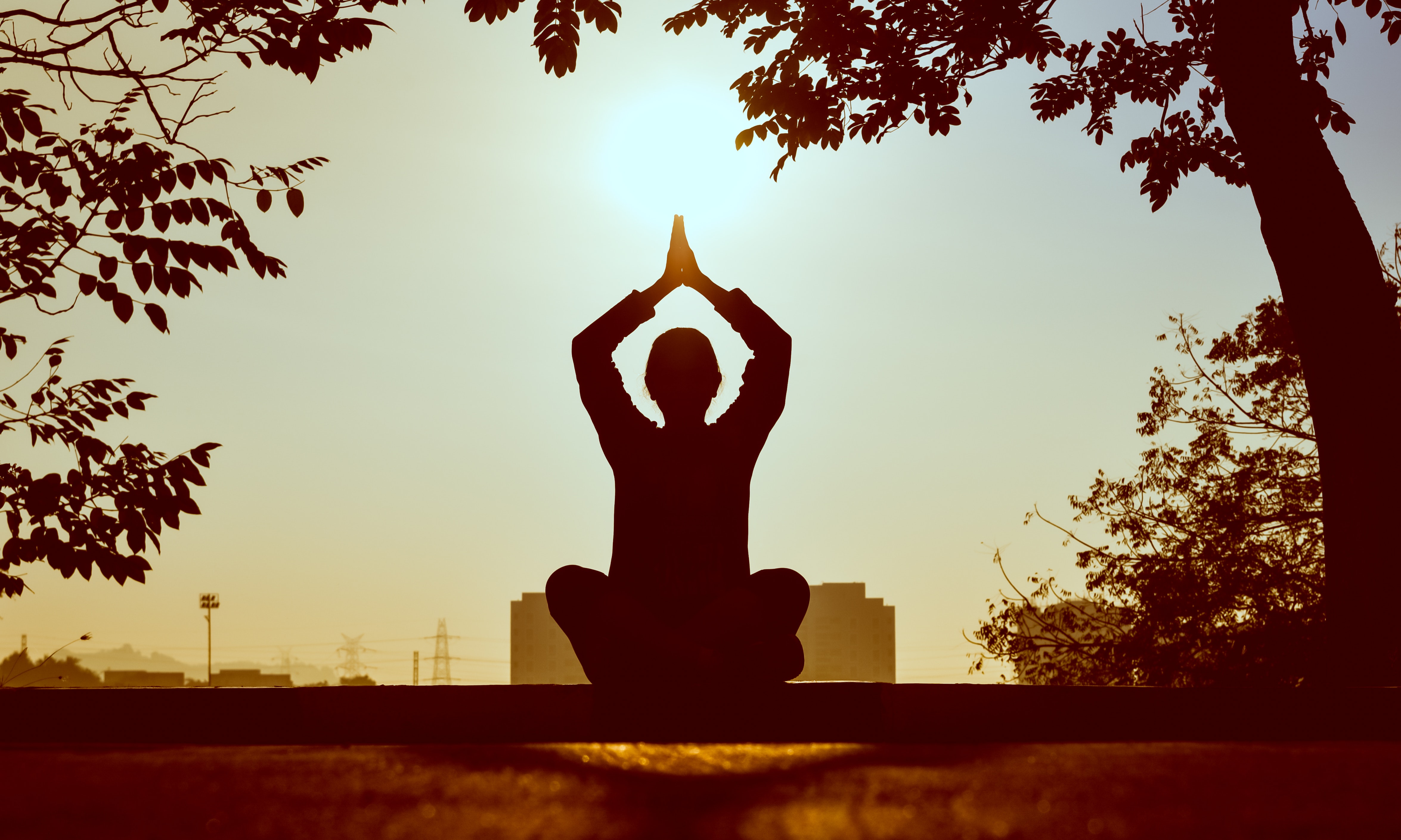Meditation is a practice that has gained popularity over the last decades. Many of us have heard about the benefits of meditation, but not many know the real meaning of meditation. If you are one of those people who knows very little about it, but feel like it’s something you would want to try, this blog is for you!
BENEFITS OF MEDITATION
- Enhances self-esteem and self-acceptance.
- Improves mood and emotional stability1. Studies in neuroplasticity show that meditation experience is associated with increased density of prefrontal cortex and anterior insula of the brain associated with personality and emotional awareness, respectively.
- Reduces stress, feeling of loneliness, and depression2,3. According to current studies, mindfulness meditation has been found to lessen the density of cortical tissue corresponding to stress and anxiety responses. It is also effective in reducing the symptoms of depression and has similar effects as antidepressant drug therapy.
- Increases mental concentration, cognitive skills and memory retention4. Novice meditators demonstrate enhanced gyrification of the brain as well as its ability to generate gamma waves. High frequency brainwave activity with the smallest amplitude is associated with peak concentration and enhanced mental processing.
- Helps to ignore distraction and management of ADHD6,7. Studies demonstrate that experienced meditators have increased connectivity within the brain regions responsible for attention. This makes meditators be more skilled at maintaining a focus on repetitive tasks. Mindfulness-based cognitive therapy has been also found to lessen hyperactivity and impulsivity among ADHD patients.
- Helps with relaxation, increases energy level and immune system8,9. A Harvard Medical School study revealed that meditation and yoga practices lead to enhanced “mitochondrial energy production, consumption and resiliency”. Such improvements develop a greater immunity and resistance to stress.
- Increased pain tolerance5. MRI scanning measuring brain activity in response to pain stimulus demonstrates reduced “pain-related brain activation” among meditators.
- Reduces blood pressure and risk of heart disease1. A long-term study done on individuals with high-risk of heart disease who were randomly assigned into either health education class or Transcendental meditation class show that those who had been practicing meditation have “significantly reduced risk for mortality, myocardial infarction, and stroke in coronary heart disease patients”. Such changes were linked to lower blood pressure and “psychosocial stress factors” as a result of a relaxation response.
Meditation doesn’t involve any sorcery or magic. It is a type of training for your inner self, just like a physical training for your body. Although it can often be practiced in groups, meditation is an individually-oriented practice that aims at attaining a state of inner concentration and consciousness through relaxation of the mind. However, it is so much more than that! The mind is the central aspect of meditation. During the practice, you are fully awake and vigilant, but your mind is inwardly focused and not concentrated on your surroundings so that your inner state is calm and single-pointed2. This lets your mind become silent. Such form of mindfulness is present in most existing types of meditation.
Mindfulness meditation can be easily practiced alone and doesn’t require a guidance from an instructor. Mindfulness meditation trains you to give the full attention to your own thoughts as they traverse your mind or whatever object you chose without any judgement while remaining aware of the moment. Let’s start with simple things: whether it is awareness of your breathing, sounds, scents, or other little things… We would be happy to share with you some tips on how to get started.
HOW TO MEDITATE
1. Find a time

Allocate the time for meditation practices. Whatever fits your schedule better: whether you choose mornings, afternoons, or evenings. You can start slowly with as little as 5 minutes per day, gradually adding 1 or 2 minutes every week.
Meditating first thing in the morning can be advantageous as it helps you to clear your mind, gives a boost of energy, and prepares you for a new day, while meditation in the evening can take the edge off after a long day and spare your thoughts. Try to be consistent and make it a daily habit.
2. Choose a place

Find a place that makes you feel the most comfortable. A quiet and well-ventilated place with as little distractions as possible, so you’re not interrupted. Pay attention as to whether you achieve relaxation while meditating with or without light. This will allow you to be present and aware of the moment.
Although music is not an essential element of meditation, it can help you as you learn to relax your mind. A pleasant melody at the background can be used to silence the distractions.
3. Your posture

Your posture has a big influence on breathing and the mind. Ideally, you want to be seated, however, a proper posture for meditation doesn’t imply taking a well-known “lotus” position. The important thing about your posture is to keep the spine straight and erect all the way from your lower back up to the neck. Since your breath and posture are undeniably intertwined, such alignment of the spine ensures open airways and proper conduction of the air through your lungs. Another reasoning behind proper posture is mindfulness because meditation is a balance between relaxation, while maintaining internal tone and concentration.
4. Your inner state

Close your eyes. Breath naturally through the movement of the diaphragm, not your chest, relax the body but pay attention to your posture. Bring your awareness to your breathing. If you notice that you shift your attention on something else (for example, noises on the street, talking in the neighbouring room, etc.), be patient and return your focus of attention to the starting point (your breathing). Avoid attempts to react, process and get involved with any thoughts, emotions, feelings, or desires that might arise as you focus on your breathing.
Finally, once you’ve achieved a good concentration and can stay mindful of this process instead of reacting to the thoughts, you will learn to watch your thoughts as they float past you letting your mind to relax.
Nowadays, people process a huge amount of information every day and the brain doesn’t always have time to react to events in the same pace as they happen. Mindfulness requires concentration and lots of patience. Don’t give up if you’re getting distracted by thoughts, just take a deep breath and give yourself some time to bring your attention back. The ability to focus the mind inwardly while ignoring distractions comes with practice but the result is a worthwhile investment.
Mindfulness meditation is a practice that brings the awareness to the present moment, allowing to bring peace into your life. Whether you aim to improve your emotional well-being, amplify your cognitive capabilities, or make your body stronger and healthier, meditation is like “multivitamins for your brain, it’s good to take it every day.”
If you are just learning how to meditate and would like to keep up with your practice and progress, Headspace: Meditation (headspace.com) and Calm (calm.com) are the apps that offer great guided meditation courses.
References:
- 76 Scientific Benefits of Meditation [Internet]. Live and Dare. 2018 [cited 2018 Nov 11]. Available from: https://liveanddare.com/benefits-of-meditation/
- Study Shows Evidence That Mindfulness Yoga May Offer Effective Treatment For Depressed New Mothers To Be [Internet]. Medical News Today. MediLexicon International; 2012 [cited 2018 Nov 14]. Available from: https://www.medicalnewstoday.com/releases/248807.php
- Arias AJ, Steinberg K, Banga A, Trestman RL. Systematic review of the efficacy of meditation techniques as treatments for medical illness. The Journal of Alternative and Complementary Medicine. 2006;12(8):817–32.
- Lazar SW, Kerr CE, Wasserman RH, Gray JR, Greve DN, Treadway MT, et al. Meditation experience is associated with increased cortical thickness. NeuroReport. 2005;16(17):1893–7.
- Zeidan F, Martucci KT, Kraft RA, Gordon NS, McHaffie JG, Coghill RC. Brain mechanisms supporting the modulation of pain by mindfulness meditation. The Journal of Neuroscience. 2011;31(14):5540-48. Available from: https://www.ncbi.nlm.nih.gov/pmc/articles/PMC3090218/
- Hasenkamp W, Barsalou L. Effects of meditation experience on functional connectivity of distributed brain networks. Frontier in Human Neuroscience. 2017 Mar 1;6:38. Available from: https://www.frontiersin.org/articles/10.3389/fnhum.2012.00038/full
- Philipsen A. Comparing the effects of mindfulness-based cognitive therapy and psychoeducational therapy on symptomatology and neurophysiological correlates of adult attention deficit hyperactivity disorder (ADHD). Clinical Neurophysiology. 2014 Jul;125(7):1407-16
- Bhasin MK, Dusek JA, Chang B-H, Joseph MG, Denninger JW, Fricchione GL, et al. Correction: Relaxation Response Induces Temporal Transcriptome Changes in Energy Metabolism, Insulin Secretion and Inflammatory Pathways. Plos One. 2017;12(2).
- Smith JC. Alterations In Brain And Immune Function Produced By Mindfulness Meditation: Three Caveats. Psychosomatic Medicine. 2004;66(1):148–9.
- Yoga International. The Real Meaning of Meditation [Internet]. 2018 [cited 2018 Nov 11]. Available from: https://yogainternational.com/article/view/the-real-meaning-of-meditation
 Alia Arslanova – Client Care Manager/Cardio Trainer
Alia Arslanova – Client Care Manager/Cardio Trainer
Alia has been doing sports since childhood: rhythmic gymnastics, tennis, synchronized swimming, and currently does Police Judo. Being constantly active, learning about human anatomy and kinetics makes her happy so choosing Kinesiology as her academic and career goal is a perfect match!







